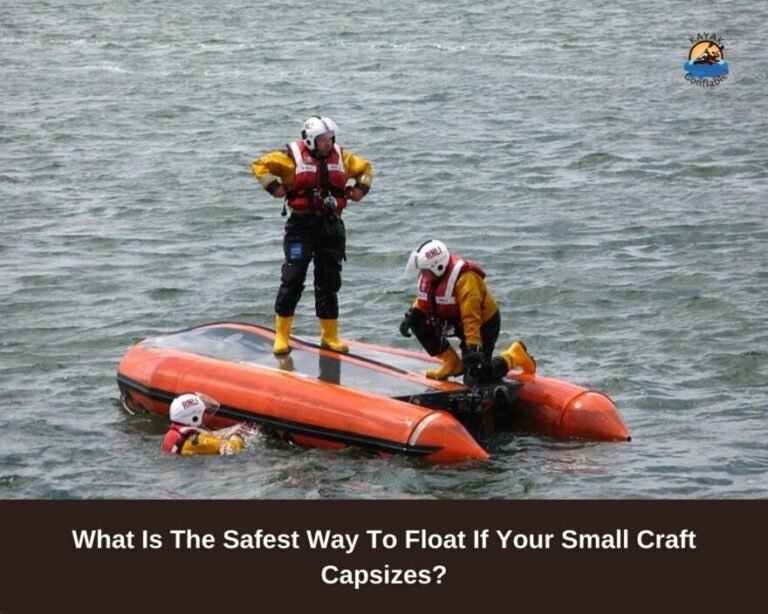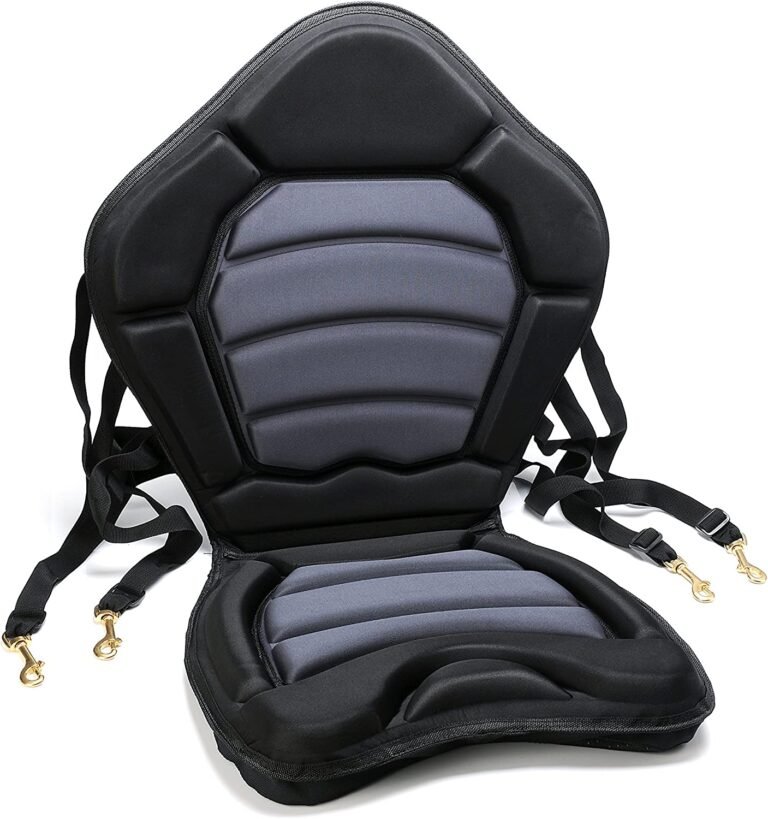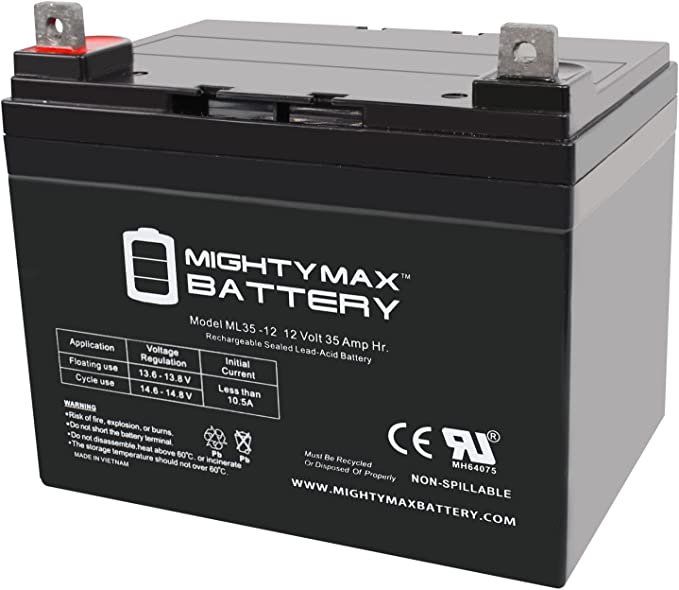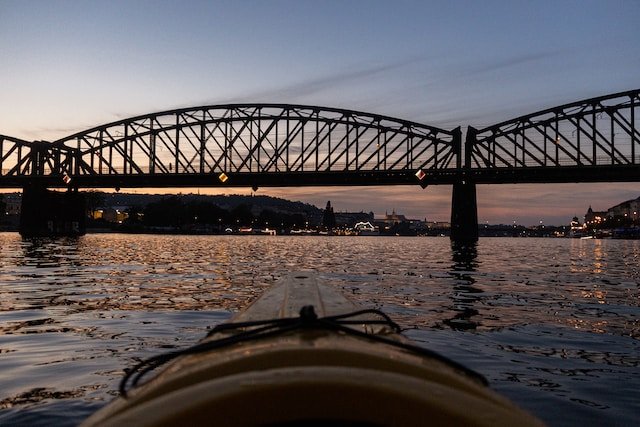Sit In Vs Sit On Kayak, Which Is Best?
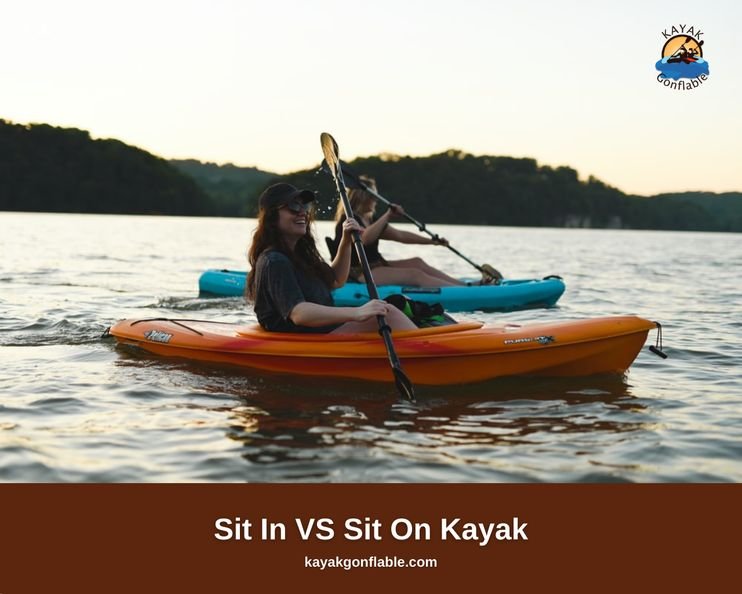
Sit On Top vs. Sit Inside Kayak, Which Should You Get?
You might have been hearing about sit-in and sit-on kayak and might have been wondering what exactly these terms mean especially if you are new to the sport of kayaking.
If you have been kayaking for a while, you are most likely used to sit-in kayaks and might be wondering if sit-on kayaks might be better especially if you are thinking of an upgrade.
In this article, we will discuss what sit-in and sit-on kayaks are, looking at the strengths and weaknesses of each type to enable you to make a more informed decision. The most basic difference between the two is the sitting position as the name implies. For the sit-in kayak, you sit inside the kayak.
That is, the seating is enclosed while for the sit-on kayak, you sit on top of the kayak, as the seating is not enclosed. A kayak brings you near the water and for the sit-on kayak, you are even in closer proximity- prepare to be one with the water.
Although there are some significant variations between sit-inside and sit-on-top kayaks, there are similarities in many of the features. They have the same components when their basic designs are examined though there may be a few distinctions in the shapes and style of these basic components.
The deck is the part of the kayak that sits on top of the water while the hull is at the bottom. For a sit-on kayak, the deck is usually wider than that of the sit-in kayak. The bow is at the front with the stern at the back.
On top of the deck, deck lines or bungees, seats, and some sort of foot support are found. Though there are similarities between both sit-in and sit-on kayaks, there are also very clear distinctions.
The most significant distinction between the two types of kayaks is that sit-insides are completely enclosed as the kayaker sits in a compartment known as the cockpit. A cockpit rim surrounds the cockpit, where a spray skirt can be attached to keep water out. The sit-on kayak on the other hand lacks an enclosed cockpit.
The seats are on the deck, hence the feeling of confinement associated with sit-in kayaks is not an issue with sit-on kayaks. This makes a sit-on a better choice for individuals who might be claustrophobic.
Sit On Top Vs Sit In Kayak
With the advent of modern technology, sit-on kayaks were designed and are now very popular in the kayaking world. Good sit-on kayaks can now give sit-in kayaks a run for their money in terms of speed. Generally speaking, sit-on kayaks are more stable and provide better health benefits than sit-in kayaks.
They were designed with the thoughtfulness of innovators to give you a smooth, healthy, and as stress-free kayaking experience as possible. For kayaking sports that test majorly for speed, a sit-in is better as the slimness and design allow for easy maneuverability.
If you thrive on adrenaline, a sit-in is an excellent choice as it gives the feeling of being risky while being safe. No one is fundamentally better when it comes to sit-in versus sit-on kayaks. What guides your choice is which is more tailored towards you and your requirements.
Your skill level, preference, kayaking adventures, and interest should guide your decision. Regardless of your choice, whether sit-in or sit-on kayak, you are guaranteed a wonderful, exhilarating, and safe kayaking experience. So you have nothing to fear.
This article will examine sit-in and sit-on kayaks from different angles, highlighting the benefits and downsides of both to assist you in making a well-rounded decision.
Sit-Inside Kayaks

Sit-in kayaks have been around much longer than sit-on kayaks, going back to the early 1570s when they were primarily employed for hunting by the Inuit and Aleut peoples.
They were made of a variety of materials, ranging from animal skins and bones to wood, depending on the function and supplies available. The first kayaks were primitive designs created by the Inuit and Aleut people to go quickly across the water some 5,000 years ago.
Sit-in kayaks have a more conventional appearance and as a result, are simple to spot. As the name indicates, a sit-inside kayak has an enclosed cockpit. This positions the paddler below the water’s surface rather than above the water level as in sit-on kayaks.
The Lifetime Payette Kayak is an excellent example of this style of kayak. The existence of a cockpit allows the paddler to crawl inside the kayak’s hull and sit with his or her legs under the deck.
Skirts can be worn around the waist of the kayaker, stretching over the cockpit rim to seal off the inside of the hull. This keeps water out of the kayak and protects the paddler from getting wet.
This makes the sit-in an ideal kayak for paddling in cold weather or areas with chilly water. Sit-in kayaks are therefore more popular in regions with colder waters or a shorter summer season. If you don’t flip your kayak over, you will get less wet in a sit-in than you will on a sit-on.
Due to the design, sit-in kayaks allow paddlers to brace their knees against the interior walls of the hull. This aids the paddler in making powerful and efficient paddle strokes, gaining more control of the kayak.
Sit-in kayaks provide a significantly lower center of gravity and as such a much higher degree of secondary stability. Which is the tendency of the kayak to remain upright when leaned on its edge for turning and paddling in rough waters. The sit-in kayak is popular among intermediate and advanced paddlers.
Advantages of Sit-In Kayaks
- One of the most significant advantages of a sit-in kayak is its low center of gravity. This results in a higher degree of secondary ability giving in it an edge over the sit-on kayak. The secondary stability allows the paddler to lean on its sides for a more efficient turning. The sit-in can remain upright when paddling in rough seas as a result of its low center of gravity. This increases the range of usage of a sit-in to include rough waters as well as calm waters.
- Sit-in kayaks are much narrower than a sit-on kayak thus requiring less effort to propel forward, making them ideal for long-distance trips and expeditions as the paddler won’t tire out easily. The narrow beam makes it possible to use a shorter paddle than would be required for a sit-on kayak, thereby reducing the arm movement required to drive the kayak.
- The enclosed cockpit of a sit-in kayak increases the paddler’s control of the kayak as it allows the paddler to place their knees against the deck’s underside, thereby improving maneuverability.
- Sit-in kayaks protect against the elements by providing partial protection against the sun. The fitted skirts around the cockpit protect from the waves allowing the paddler to remain dry and warm even in a wet and cold environment. This allows water to be kept out of the hull except in the event of a capsize. Even if you are caught kayaking during a downpour, you’ll most likely be more protected in a sit-in than on a sit-on kayak.
- The significantly lower profile causes a sit-in kayak to be far less adversely affected by wind than a sit-on kayak design. Making it less prone to drifting and ensuring better tracking of the kayak.
- The lack of self-draining scupper holes in the bottom of the kayak’s cockpit allows the cockpit to remain dry unless the water is splashed into an uncovered cockpit by waves breaking over the bow.
- They tend to be lighter to carry than hard-shell sit-on kayaks as sit-on kayaks tend to be bulkier and heavier. Most modern sit-in yaks are made of blow-molded plastic, making them lightweight enough for one person to move around out of the water.
Disadvantages of Sit-In Kayaks
- Since it provides a cockpit where the paddler may sit, sit-in kayaks give many paddlers the sense of being restricted. Sit-in kayaks might be a good alternative for you if you don’t mind the prospect of feeling constricted.
- Sit-in kayaks generally have a much lower degree of initial stability which is the tendency of the kayak to stay upright when the paddler is sitting with the keel directly underneath them. This is because they are narrower and have a significantly lower center of gravity.
- Due to the much smaller hatch covers and the lack of an open tank well in the stern, sit-in kayaks are limited to carrying only items that are small enough to fit through the hatches.
- Are inadequate for fishing as a sit-in kayak’s cockpit limits the range of motion needed for proper casting and reeling. They are also not conducive to storing fishing rods and tackle boxes.
- While manufacturers are incorporating tandem options for sit-in kayaks, there are fewer options than with sit-on kayaks. Hence, kayaking is mostly limited to a solo sport and a form of recreation with sit-in kayaks.
- They can be sunk if both hatch covers come off in heavy seas allowing both the bow and stern holds to be filled with water.
- They are also far more difficult to re-enter if the kayak does capsize than a sit-on kayak. If a sit-in kayak is flipped over, the paddler might have to swim with the kayak back to shore to empty the water. To prevent this, a hand-operated, foot-operated, or battery-operated bilge pump is necessary to drain water out of the cockpit.
In reality, it is much harder for a kayak to capsize than most people imagine. Many people are apprehensive about sit-in kayaks because of the “flipping factor” but most recreational kayaks are stable.
The ability of a paddler to swim can also help with the assurance of not being stranded in the water. Irrespective of whether your kayak is a sit-on or sit-in type, the flipping factor has more to do with the kayak’s design and hull shape than the positioning of the seat.
There is little to worry about as there is little to no chance of being stuck in a sit-in kayak in the event of a capsize as the paddler will pop out immediately from the kayak to the water surface. Looking to get an inflatable sit-on-top kayak for your water adventure? Read our in-depth guide on the best inflatable sit-on-top or sit-in kayaks.
For comfort and simplicity of entrance, most sit-in recreational kayaks have spacious cockpits. If you flip your kayak, the big cockpits may take in a lot of water. Bulkheads are used in touring kayaks to keep the quantity of water in the boat to a minimum.
The majority of recreational kayaks don’t have bulkheads or just have one behind the seat. This implies that if you swamp, you’ll be dealing with a lot of water. Climbing back into a flooded recreational kayak may be difficult, and even if you do, getting the water out might be challenging.
It can be nearly hard to paddle a flooded boat without a front bulkhead. For these reasons, sit-inside recreational kayaks should be paddled close to the coast, where a quick swim to the beach may safely empty you out and get you back on the water.
Recreational kayaks with a single bulkhead or none at all are easier to rescue than touring kayaks with two bulkheads and hatches. This makes it safer for them to paddle far away from the coast.
If you intend to paddle a touring kayak in open water, you’ll need to learn some specific rescue procedures to ensure that you can get back into the boat safely if it capsizes. If you plan to utilize your kayak for coastal paddling and camping, it’s definitely worth the effort.
Sit On Top Kayaks

The development of kayaking as a sport brought about development in kayak designs as the list of possibilities in kayaking increased. A sit-on kayak allows the kayaker to sit on rather than in the kayak. Sit-on kayaks also known as sit-on-top kayaks can be recognized easily by the positioning of the seats.
Since they lack an enclosed cockpit, the seat is positioned such that it allows the kayaker to paddle from above the water level. An example is the Wilderness Systems Tarpon 120. Because they don’t have a liveable interior, all of the other features are mounted to the kayak’s deck, except for the reel.
Sit-on kayaks are stable, easy to slip on and off, and are highly user-friendly. The sit-on kayak is the go-to choice for beginners and fishermen as they do not feel trapped inside the kayak and are quite stable. They’re simple to get in and out of and don’t give the impression of being confined.
Another advantage of sit-on-tops is that you can easily slip on and off them, a safety feature in case of an accidental capsize. All of these characteristics make the sit-on-top kayak an excellent choice for hesitant paddlers, warm climates, and kayaking with children who like swimming.
Also, sit-on kayaks are spacious so, the paddler is not limited in movement which is an essential feature for a fisherman as there is a need for proper casting and keeling. It is a great kayak choice for warm weather conditions and in the tropics.
They’re also self-bailing, which means they contain little holes (known as “scupper holes”) in them that enable water to drain freely. The scupper holes are holes on the sit-on-top kayaks that let water drain through thereby preventing the accumulation of water in the kayak.
The scupper holes are self-draining plugs that allow water that splashes into the kayak to automatically drain out. Sometimes, scupper holes allow water into the kayak hence allowing water movement in a two-way direction.
To prevent water from coming in through the scupper holes, a scupper plug can be obtained. Scupper plugs generally prevent water from getting in and out of the sit-on kayaks through the holes.
Some scupper plugs allow for a unidirectional flow of water – water flows out of the kayak but not into the kayak via the scupper holes. With this type of scupper plug, there is most times no need for a sponge or pump to eliminate water build-up in the kayak. For a drier ride on a sit-on kayak, scupper plugs are a necessity.
Most sit-on-top kayaks have foot wells that serve as foot braces for paddlers. It is important in the selecting of sit-on-top kayaks, that paddlers select a kayak with a suitable foot-well based on their height.
Advantages of a Sit On Kayaks
- One of the greatest benefits of a sit-on kayak as mentioned above is the open cockpit. Hence, there is no feeling of confinement produced by the kayak. In the event of a capsize, the paddler doesn’t feel trapped as the kayak is easy to leave and reenter.
- Sit-on kayaks are usually wider as they have a significantly higher center of gravity and as such, a much higher level of initial stability. This means that sit-on kayaks have a higher tendency to remain upright when the kayaker or paddler is sitting with the keel directly beneath them.
- It is literally impossible to sink a sit-on kayak because they have a completely enclosed hull design. So this provides the confidence you need to get on and in the water especially for amateur paddlers as there is a reduced possibility of sinking or drowning.
- Sit-on-top kayaks will not fill with water unless a hatch malfunctions. This means that if they capsize, they may be paddled immediately away. To get the water out of the cockpit, you don’t need to swim to the beach and empty them or execute a rescue.
- Sit-on kayaks have self-bailing scupper holes. These holes let water out of the cockpit so in case of an accidental capsize you don’t have to get the kayak to shore it drains out the water. They are thus an excellent choice for paddling in the surf zone as paddlers don’t necessarily need a bilge pump. There is the freedom to focus on paddling with no worries.
- There is enough room for carrying bulky items. When going on a long trip there is space to accommodate a cooler to keep drinks cool and a picnic basket.
- With a sit-on kayak, there are limitless options to accommodate a friend, lover, pet, or even your family. The tandem options provide opportunities to paddle together with another person or more depending on the design. Enjoying the peacefulness of the water with another.
- Sit-on-top kayaks are great for fishing as there is no limit to movement. There is enough space for keeling and casting. There is also enough space on the kayak for fishing equipment. Its stability eliminates the risk of sinking.
Disadvantages of a Sit-On-Top Kayaks
- Sit-on-top kayaks are usually slower than sit-inside kayaks with a smaller beam because of their wider beam. As a result, propelling them forward requires greater work from the paddler, making them best suited for short-distance expeditions for kayak fishing. With recent technological advancements, some newly enhanced sit-on kayaks can now compete for speed with sit-in kayaks.
- Sit-on-top kayaks have a substantially lower degree of secondary stability due to their greater beam width and significantly higher center of gravity. When the kayak is leaned on its edge for turning or paddling in strong waves, the kayak has a reduced propensity to stay upright.
- The open cockpit prevents the paddler from putting their knees on the underside of the deck, limiting the paddler’s control and agility of the kayak. Sit-on kayaks have lesser maneuverability than sit-in kayaks.
- The broad beam compels the paddler to use a longer paddle than they would with a narrower sit-inside design, and the longer a kayak paddle is, the longer its Moment Arm is, and the more work it takes to drive the kayak ahead.
- The paddler is exposed to the elements in the open cockpit, which provides little shelter from the sun or waves smashing over the bow or gunwale. The disadvantage of sit-on-top kayaks is that you will almost certainly get wet when paddling, whereas sit-inside kayaks will keep you dry.
- For safety, all paddlers should dress correctly for the water temperature to avoid hypothermia if they go for a swim. This is especially essential with sit-on-top kayaks because of the exposed seating posture.
- Due to the general substantially higher profile, a sit-on-top kayak is significantly more influenced by wind than a sit-inside kayak.
- The self-draining scupper holes in the bottom of the kayak’s cockpit keep a minimal quantity of water in the bilge at all times.

